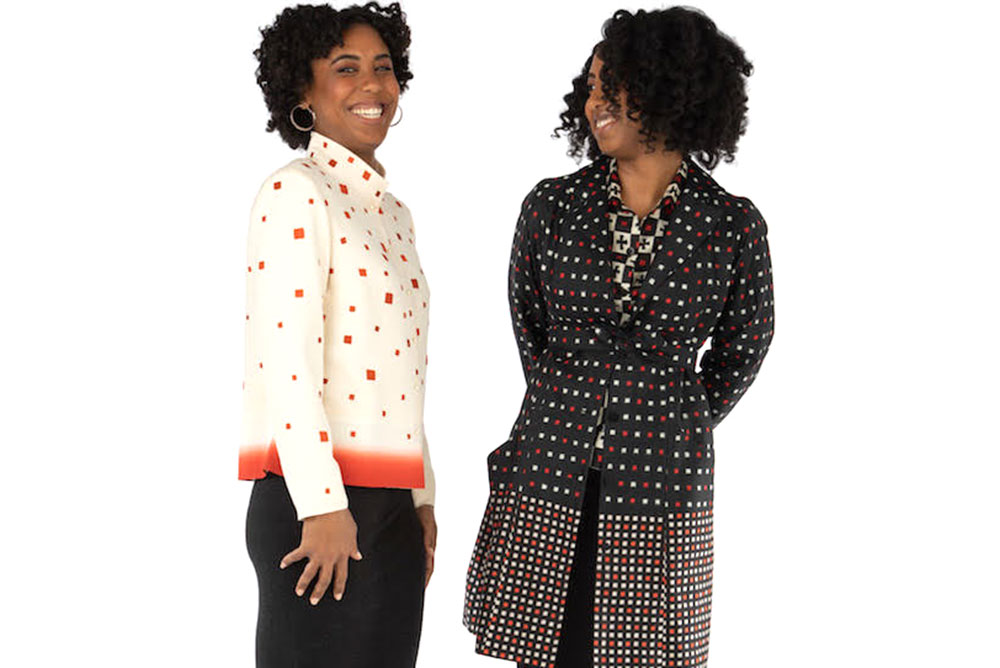
Many of the pieces from Ann Williamson, of Portland, Oregon, are one-of-a-kind because she works from vintage textiles, often Japanese kimono silks. Like other exhibitors, she offers alterations to the pieces she displays. Sleeves can be shortened, shoulders taken in, garments sized down. Sizing up is harder, but sometimes it can be done.
THERE’S NOTHING like a new jacket to make a woman’s closet happy. And to give a stylish new life to all those pairs of black pants.
—-
We believers in this wardrobe magic should make a date to visit the Smithsonian’s Craft2Wear show next week. Of course the show will feature jewelry makers to spare, plus handbag and scarf designers. But I’m always happy to add a new jacket to my wardrobe, and that’s a category in which C2W shines as bright as a full moon.
—-
More than a few of these designers, mostly women, find inspiration in exquisite vintage Japanese obis and kimono fabrics. Preserving the delicate old workmanship is a happy by-product of this up-cycling, with the new jacket owner’s bliss a terrific benefit.
——
Ann Williamson of Portland, Oregon, pointed out that Westerners have been using Japanese fabrics ever since the two sides of the world made contact with each other. Kimono silks, she explains, have body and strength but also drape beautifully. One aspect of kimono silks and their popularity that I didn’t anticipate is that, as Williamson explained, kimonos are made from large rectangles of fabric, so when you take one apart you have large, clean-cut lengths of cloth from which to cut out a new pattern.
——
Other textile designers work in every fabric from cotton to mohair to alpaca to wool blends and back. One artisan, Mary Lynn O’Shea, works with one of the last jacquard mills in the country in order to produce her exclusive fabrics. Another, Sandra Miller, deploys several expert knitters around the country to loom her intarsia patterns by hand using cotton and wool yarns on knitting machines; she then finishes them with cording, buttons, beads or other embellishments.
—-
The prices for these hand-crafted treasures are not of the Old Navy variety, nor should they be. The lightweight cotton-blend Mixed Up Jacket from Elizabeth Holliday’s De Novo Style is $245, her all-knit Grommet Jacket of boiled merino wool $360. Mary Lynn O’Shea’s Essex Light Weight Jacket is $595 short, $650 long. For Outside Designworks‘s cheerful rainwear, you can expect to pay $410 for a reversible waterproof car coat and $265 for “Hoodie,” a short rain slicker with hood, available in more than a dozen colors and patterns.
—-
Other coats and jackets exhibited at the show can run much higher. But customizing is always a possibility here, without the couture price tag. The textile artists will offer a selection of sizes and styles, of course, but many are there also to take commissions to make the jacket you’ve always dreamed of.
—-
And when’s the last time Old Navy asked you what you’d like to see in a jacket?
—Nancy McKeon
—-
The Craft2Wear three-day event kicks off Thursday night, October 3, from 6 to 9pm, with an opening-night benefit and preview party (tickets, $75, advance purchase only). Mingle with the artists, get first dibs on their one-of-a-kind creations and enjoy cocktails and hors d’oeuvres. For tickets ($75 each and includes a return ticket to the show on either Friday or Saturday), visit Smithsonian Craft2Wear.
Hours for the show Friday, October 4, 10:30am to 7:30pm, and Saturday, October 5, 10:30am to 5:30pm. Tickets: $15 at the door; $13 advance purchase. Buy tickets at Smithsonian Craft2Wear.
National Building Museum is located at 401 F Street NW, Washington DC 20001 (directly across from the Metro Red Line Judiciary Square Station, F Street exit).
—-
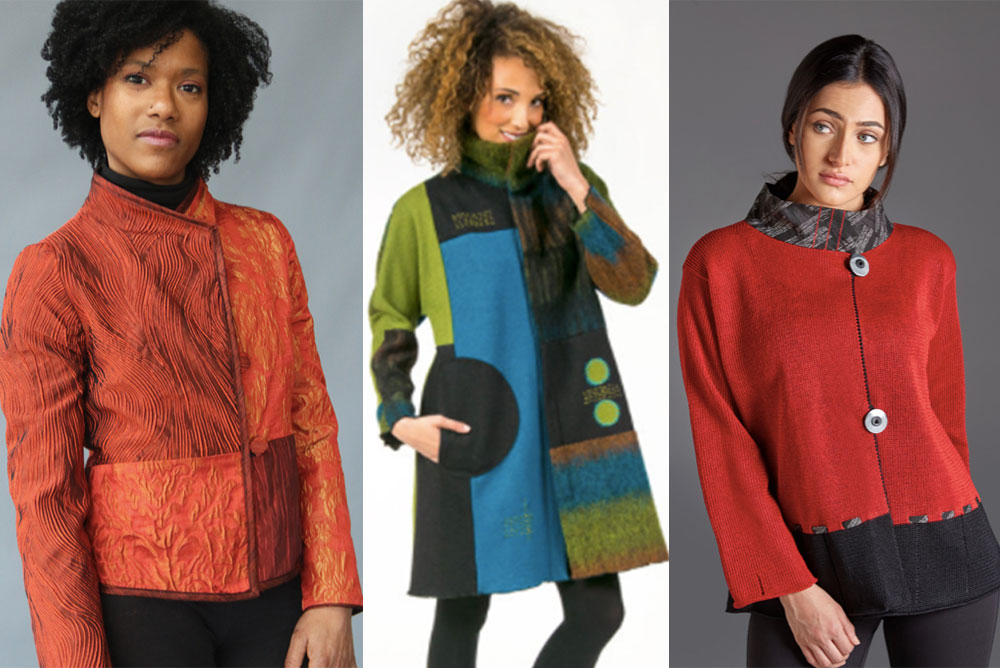
LEFT: Mary Lynn O’Shea makes her jackets from fabrics she designs and has made on some of the last jacquard looms in the US. In addition, the Vermont-based artisan and her daughter, now also an experienced seamstress and pattern maker, fashion their garments’ buttons on reconditioned turn-of-the-century button equipment. Shown is the Light Weight Essex Jacket in the “zest” color way.
CENTER: Jane Herzenberg of Massachusetts makes jackets and coats using the Japanese techniques of Shibori dyeing (a resist-dyeing technique) and Sashiko and Boro hand-stitching, once used to reinforce older garments and now used decoratively. She updates those ancient techniques with bursts of modern color.
RIGHT: Sandra Miller of West Chester, Pennsylvania, guides several expert knitters across the country to hand-loom her intarsia fabrics on knitting machines; she then finishes them by hand herself, often adding jacquard fabric accents.
—-
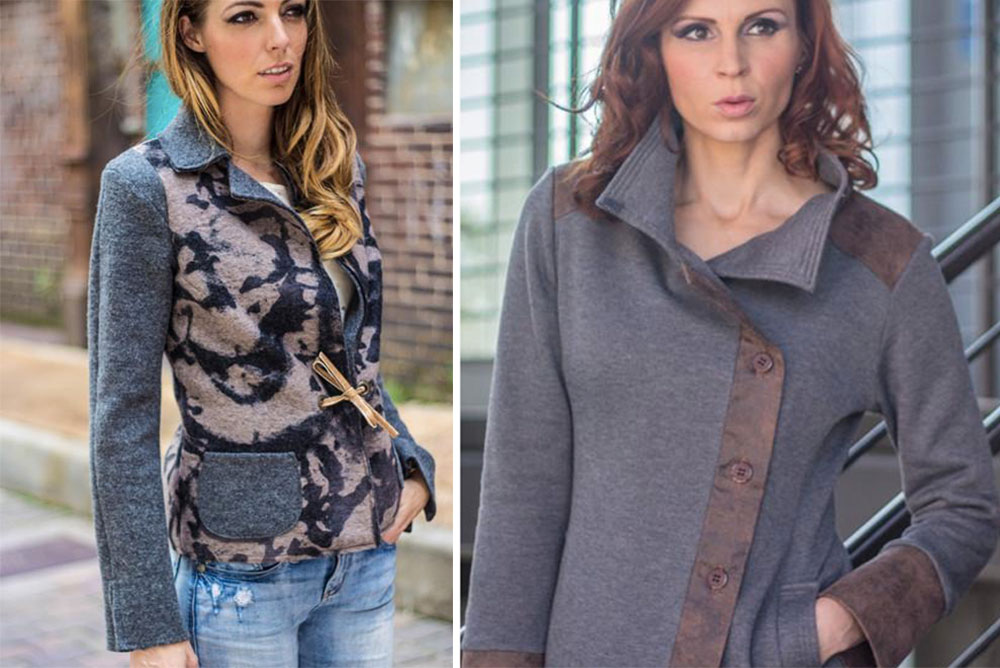
Elizabeth Holladay’s designs for De Novo Style are made by hand in Memphis, Tennessee, from cashmere, wool blends, alpaca and other fabrics.
LEFT: De Novo’s Grommet Jacket is all-knit, made from Italian boiled merino wool that is then painted.
RIGHT: De Novo’s Mixed Up Jacket is a cotton-blend knit that is lightweight but warm, trimmed in leather.
—-
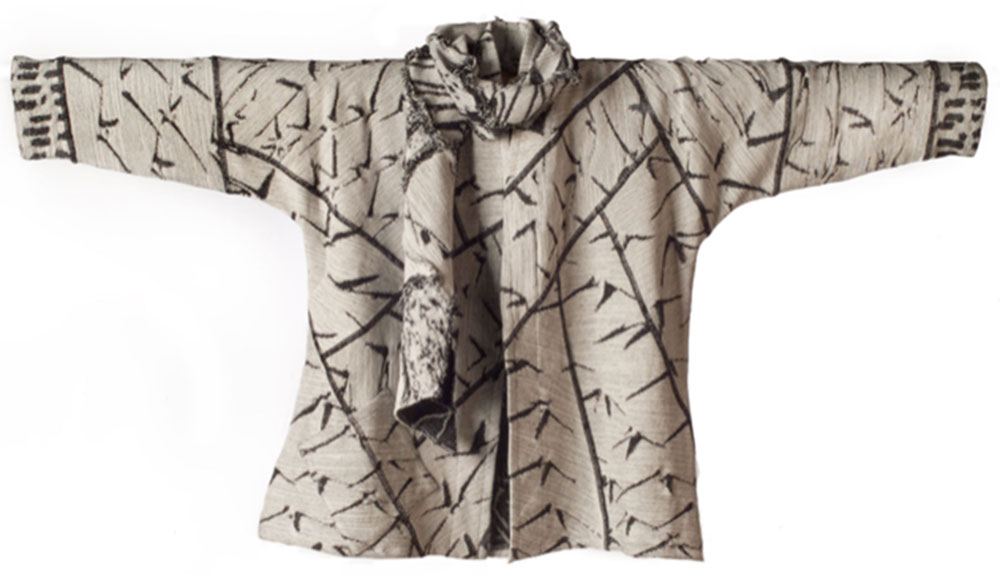
The Paloma jacket and scarf, above, in the “light piano” colorway are from Chris Triola, a textile artist based in East Lansing, Michigan. The simple shape of the jackets allows the color combinations to stand out in graphic ways.
—-
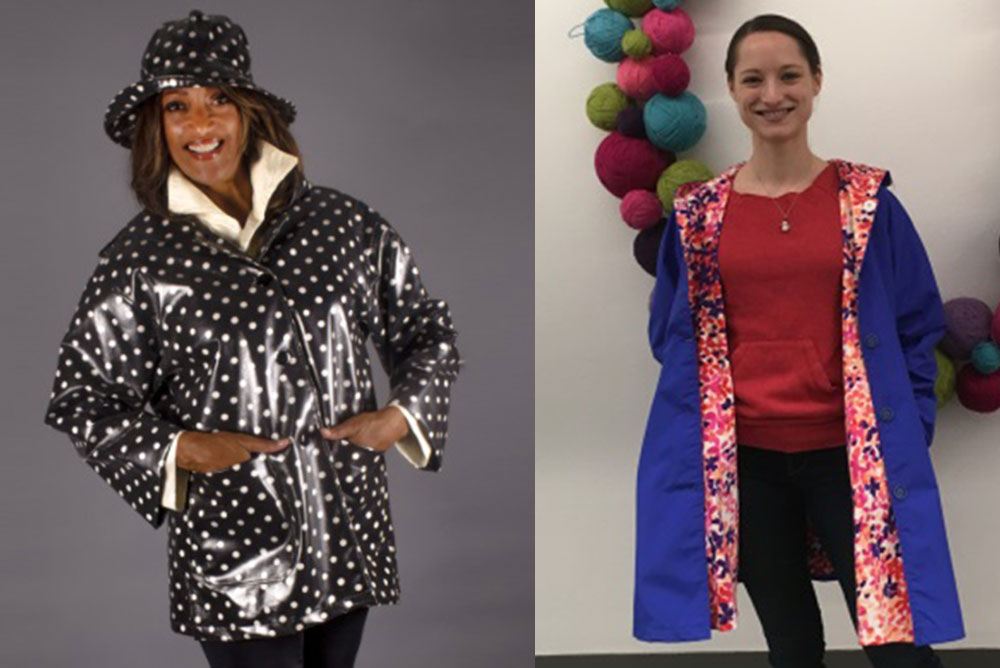
Denise Dickens’s rainwear for her Outside Designworks studio in Washington DC could almost make you wish for a bit of precipitation.
LEFT: The Rain Slicker With Hood starts with cotton in more than a dozen colors and patterns to choose from. The fabric is then treated with a matte laminate for waterproofing. Matching rain hats are also available.
RIGHT: The Reversible Matte Swing Carcoat With Hood, with raglan sleeves and slash pockets, is solid-color and waterproof nylon on one side and printed cotton, for sunnier days, on the reverse.
MyLittleBird often includes links to products we write about. Our editorial choices are made independently; nonetheless, a purchase made through such a link can sometimes result in MyLittleBird receiving a commission on the sale, whether through a retailer, an online store or Amazon.com.

I think my favorite jackets are the hardest for me to get rid of, even though I’ve had for too many years. A new cool jacket is uplifting! and I wish I could come next weekend but I will be away 🙁 I will be looking around in the next few weeks.